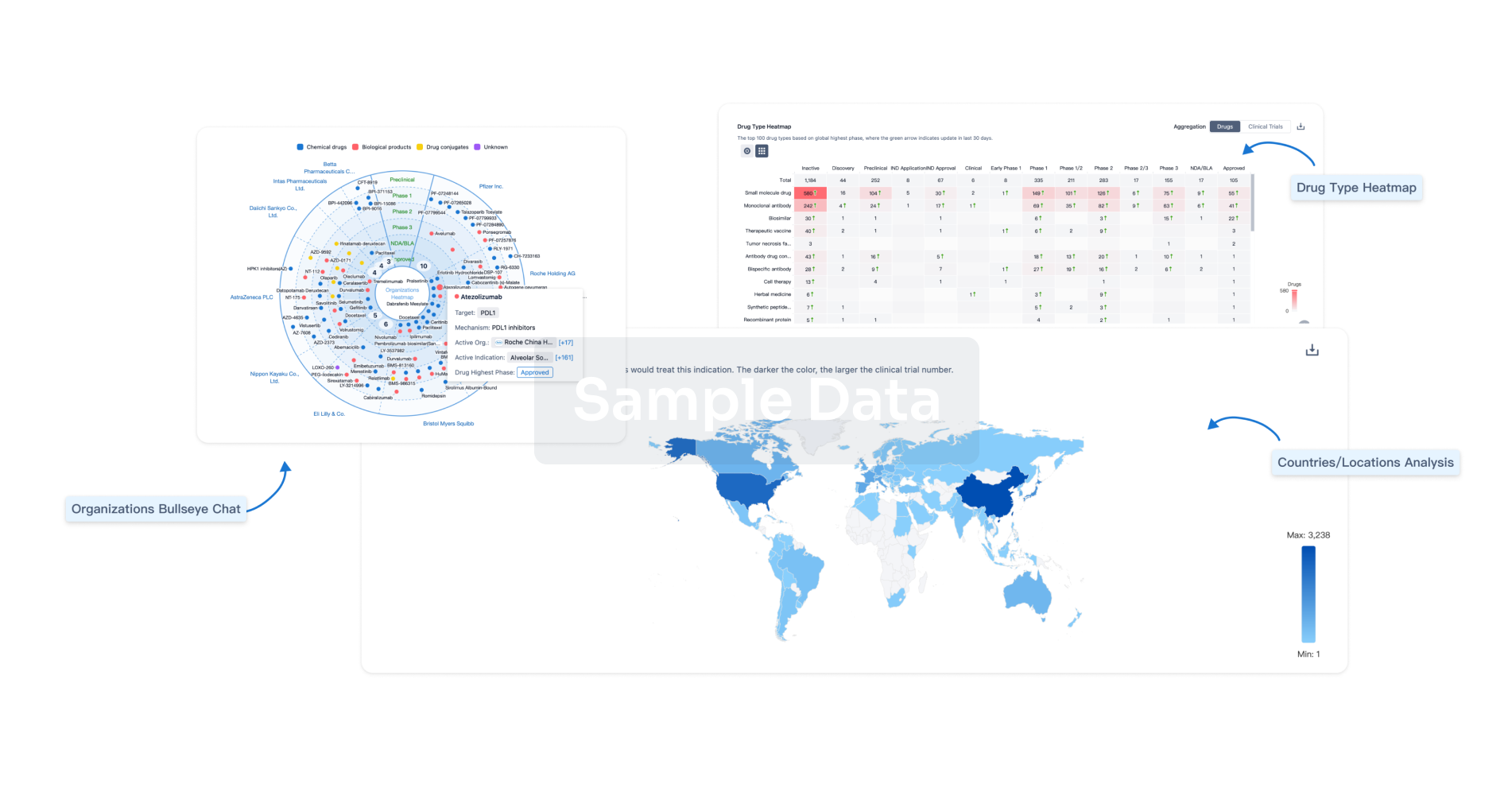Request Demo
Last update 08 May 2025
Ischemic nephropathy
Last update 08 May 2025
Basic Info
Synonyms Ischaemic nephropathy, Ischemic Nephropathy, Ischemic nephropathy + [7] |
Introduction Nephropathy due to hypoperfusion of the kidney. |
Related
2
Drugs associated with Ischemic nephropathyTarget |
Mechanism NCOA4 modulators [+1] |
Originator Org.- |
Active Indication |
Inactive Indication- |
Drug Highest PhasePreclinical |
First Approval Ctry. / Loc.- |
First Approval Date20 Jan 1800 |
Target |
Mechanism A2bR agonists |
Active Org.- |
Originator Org. |
Active Indication- |
Inactive Indication |
Drug Highest PhaseDiscontinued |
First Approval Ctry. / Loc.- |
First Approval Date20 Jan 1800 |
5
Clinical Trials associated with Ischemic nephropathyNCT02266394
Hypoxia and Inflammatory Injury in Human Renovascular Hypertension : Phase 1 Trial of Mesenchymal Stem Cell Therapy
Current treatments for ARAS based on restoring blood flow alone have been unsuccessful at recovering kidney function. For this reason we are studying a stem cell product called "mesenchymal stem cells" or MSC. Mesenchymal stem cells (MSC) are grown from a person's own fat tissue (obtained as a fat biopsy) and infused back into the patient's own kidney.
This study is also being done to determine if the MSC infusion prior to percutaneous transluminal renal angioplasty with stenting (PTRA) further enhances changes in single kidney blood flow and restoration of kidney function, as well as to assess the relationship between MSC dose and measures of kidney function.
This study is also being done to determine if the MSC infusion prior to percutaneous transluminal renal angioplasty with stenting (PTRA) further enhances changes in single kidney blood flow and restoration of kidney function, as well as to assess the relationship between MSC dose and measures of kidney function.
Start Date21 Oct 2014 |
Sponsor / Collaborator  Mayo Clinic Mayo Clinic [+2] |
NCT01840540
Phase I Study of Autologous Mesenchymal Stem Cells in the Treatment of Atherosclerotic Renal Artery Stenosis
To determine the safety and toxicity of intra-arterial infused autologous adipose derived mesenchymal stromal (stem) cells in patients with vascular occlusive disease of the kidney.
Start Date01 Apr 2013 |
Sponsor / Collaborator |
NCT02044835
The Evaluation Studies of Curative Effect of Fu-zheng-qu-zhuo Oral Liquid in Treatment of Ischemic Nephropathy
• Background: Since evidence show that renal-artery stenting did not confer a significant benefit with respect to the prevention of clinical events when added to comprehensive, multifactorial medical therapy in people with atherosclerotic renal-artery stenosis[1], the aim of our study was to confirm Fu-zheng-qu-zhuo (FZQZc) oral liquid, a herbal medicine, combined with optimal medical therapy of internal medicine (OMT), including anti-platelet therapy and other protocol-driven medical therapies to control blood pressure and glucose and lipid levels in accordance with guidelines,resulted in greater renal function protection in patients with atherosclerotic renal artery stenosis ( ARAS) compared with OMT alone.
Methods : A randomized, placebo-controlled, single centre clinical design. Sixty patients with diagnosed atherosclerotic renal artery stenosis and had chronic kidney disease stage 3 will be recruited, and will be randomized into two groups in a 1:1 ratio ( FZQZ and placebo Group, 30 respectively). FZQZ Oral liquid or placebo 20 ml every time, three times a day for different groups, meanwhile, all participants in both treatment groups received OMT, 6 months therapeutic period. Serum creatinine, estimated glomerular filtration rate(eGFR), urine protein, and cardiovascular and renal events (a composite end point of death from cardiovascular or renal causes, myocardial infarction, stroke, hospitalization for congestive heart failure, progressive renal insufficiency, or the need for renal-replacement therapy) will be compared between the Groups as the outcome.
Methods : A randomized, placebo-controlled, single centre clinical design. Sixty patients with diagnosed atherosclerotic renal artery stenosis and had chronic kidney disease stage 3 will be recruited, and will be randomized into two groups in a 1:1 ratio ( FZQZ and placebo Group, 30 respectively). FZQZ Oral liquid or placebo 20 ml every time, three times a day for different groups, meanwhile, all participants in both treatment groups received OMT, 6 months therapeutic period. Serum creatinine, estimated glomerular filtration rate(eGFR), urine protein, and cardiovascular and renal events (a composite end point of death from cardiovascular or renal causes, myocardial infarction, stroke, hospitalization for congestive heart failure, progressive renal insufficiency, or the need for renal-replacement therapy) will be compared between the Groups as the outcome.
Start Date01 Jan 2013 |
Sponsor / Collaborator |
100 Clinical Results associated with Ischemic nephropathy
Login to view more data
100 Translational Medicine associated with Ischemic nephropathy
Login to view more data
0 Patents (Medical) associated with Ischemic nephropathy
Login to view more data
2,739
Literatures (Medical) associated with Ischemic nephropathy01 Dec 2025·Immunologic Research
Echinocystic acid ameliorates ischemic acute kidney injury in neonatal rats by attenuating ferroptosis via the Nrf2/GPX4 pathway
Article
Author: Dang, Xiaoping ; Jiang, Xun ; Zhang, Qiong ; Hu, Xiaojian
01 Jul 2025·Phytomedicine
Magnesium Lithospermate B Protects Against Ischemic AKI-to-CKD progression via regulating the KLF5/CDK1/Cyclin B1 pathway
Article
Author: Teng, Jie ; Xu, Xialian ; Pan, Kunming ; Song, Nana ; Yu, Jinbo ; Jin, Shi ; Lin, Liyu ; Ding, Xiaoqiang ; Su, Yiqi ; Wang, Yaqiong ; Zhang, Zhen ; Zhang, Lin ; Xu, Chenqi ; Shen, Daoqi
01 Jun 2025·Autonomic Neuroscience
Renal nerve afferents drive preferential renal sympathoexcitation in response to acute renal ischemia/reperfusion in rats
Article
Author: Lantyer, R ; Santos, D D ; Bergamaschi, C T ; Marreiros, A C ; Milanez, M I O ; Carvalhal, R S ; Gil, C D ; Knuepfer, M M ; Nishi, E E ; Campos, R R
Analysis
Perform a panoramic analysis of this field.
login
or

AI Agents Built for Biopharma Breakthroughs
Accelerate discovery. Empower decisions. Transform outcomes.
Get started for free today!
Accelerate Strategic R&D decision making with Synapse, PatSnap’s AI-powered Connected Innovation Intelligence Platform Built for Life Sciences Professionals.
Start your data trial now!
Synapse data is also accessible to external entities via APIs or data packages. Empower better decisions with the latest in pharmaceutical intelligence.
Bio
Bio Sequences Search & Analysis
Sign up for free
Chemical
Chemical Structures Search & Analysis
Sign up for free


